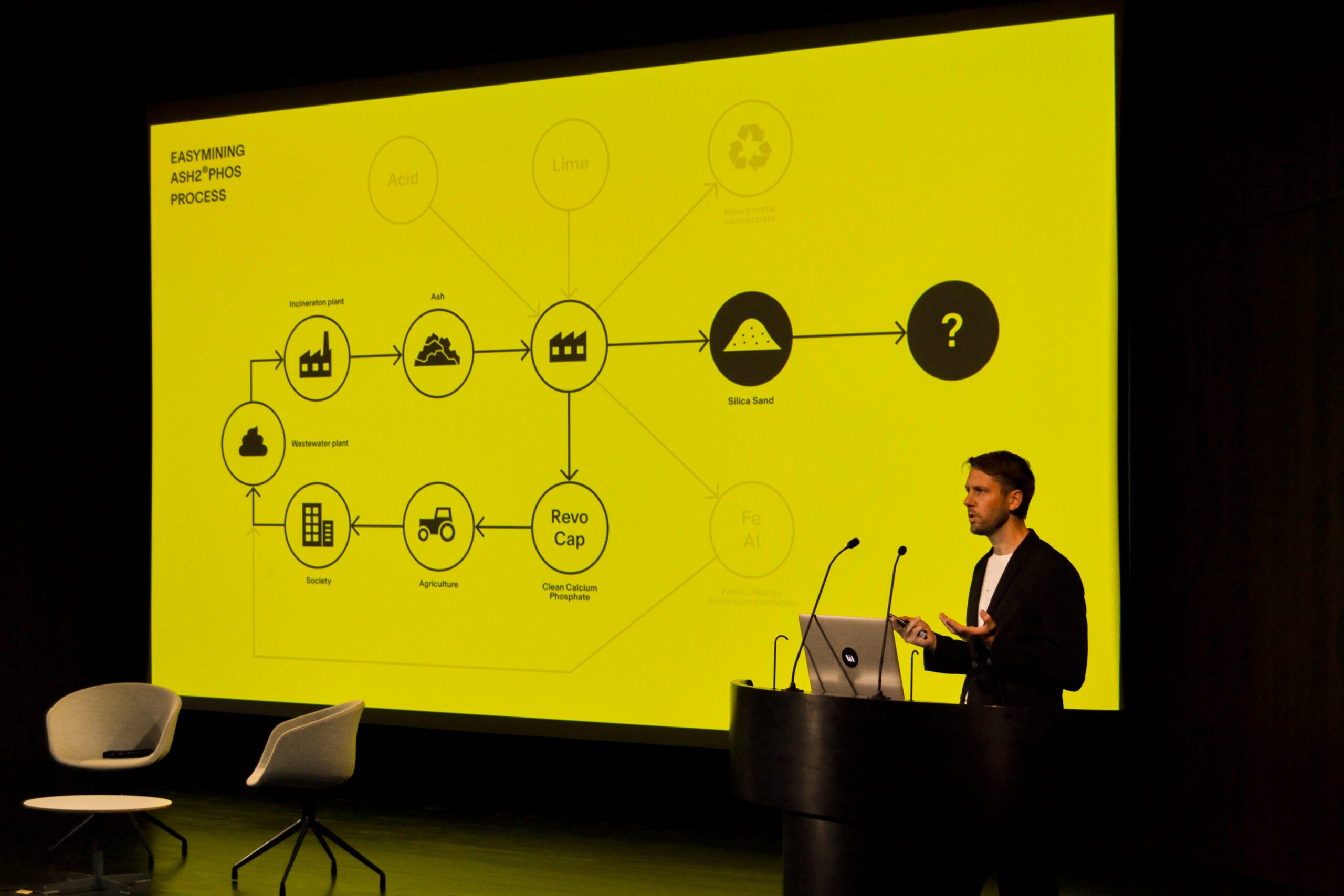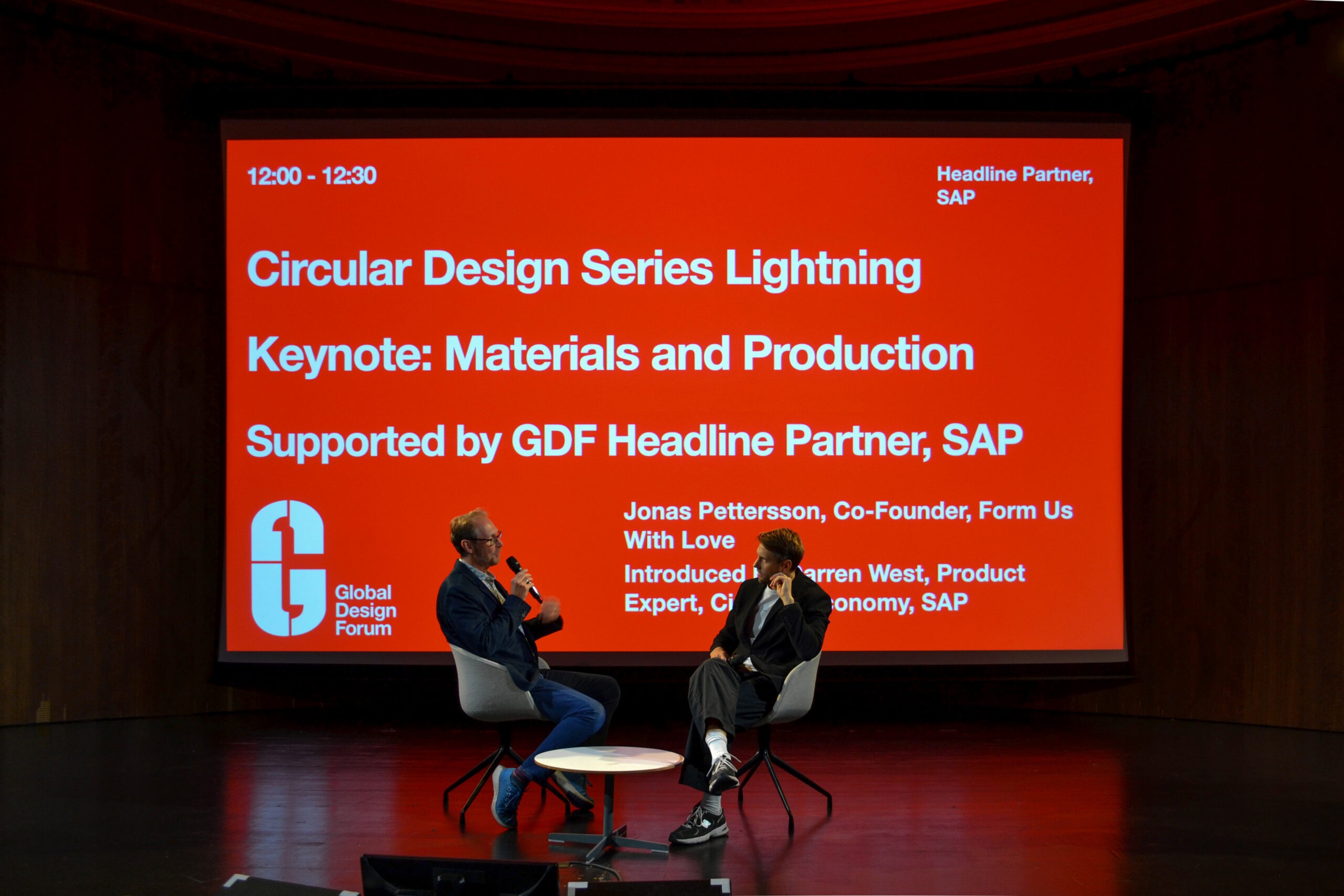

Designing a Sustainable Future
– A summary from London Design Festival’s thought leadership programme the Global Design Forum.
In an era dominated by a culture of waste, where our planet’s resources are being rapidly depleted, it has become imperative to shift towards a more sustainable way of life. This transformation is not only the responsibility of individuals but also of industries and companies that aspire to thrive in the future. The question that arises is: What role should design play in this critical transition?
Form Us With Love: A Vision for Sustainable Design
Form Us With Love’s journey began in 2005 when co-founders Jonas Pettersson and John Löfgren graduated from design school in Sweden and simultaneously founded Form Us With Love with the ambition to work in a different way from other studios they have encountered. Over the years, the studio has been fortunate to collaborate with renowned brands like IKEA, Samsung ,and Orkla. However, for FUWL, this success is a byproduct of their unwavering commitment to a simple yet powerful belief: design should be a force for good, capable of harmonizing business goals with environmental stewardship.
Baux: Unearthing Sustainable Acoustics
A decade ago, the seed for BAUX, their venture in sustainable acoustics, was planted. It all began with the move to a new studio in Stockholm, which boasted an open floor plan but suffered from terrible acoustics. The solution emerged from an old building material composed of wood, water, and cement, traditionally used in industrial architecture. The FUWL team was intrigued by its acoustic properties but noticed it didn’t align with modern aesthetics. This was their chance to make a difference.
They embarked on a journey to transform this material into something contemporary and sustainable. They introduced new shapes and colors, and the response was overwhelming. Orders poured in from around the world. Thus, Baux was born, offering beautiful and sustainable acoustic solutions.
In their quest for sustainability, they explored biochemistry and developed a new recipe for their wood wool products using renewable materials. The path was challenging, but their commitment to sustainability kept them going. They invested time, not just money, and refused external funding, proving that sustainability can be achieved without compromising principles.
IKEA: Designing for Comfort and Sustainability
A decade ago, Form Us With Love had the privilege of addressing IKEA‘s global leaders at the IKEA Forum, sharing their ambition for design’s value. This collaboration led them to take on various projects, including improving IKEA’s chair assortment. They recognized the need to prioritize comfort and longevity, resulting in the creation of Janinge, a comfortable chair designed for both homes and public spaces.
Their collaboration with IKEA extended to tackling waste. They explored the use of recycled plastic and post-industrial wood in furniture production, redefining flat-pack furniture for future needs. This endeavor not only resulted in innovative products but also highlighted the power of designers to influence sustainable production practices.
Ragnsells: Turning Waste into a Valuable Resource
The studio’s commitment to sustainability goes beyond design products. They’ve also collaborated with Ragnsells, a recycling company, to tackle a pressing issue: sand, the second most exploited material globally. They’ve been working on a project to extract valuable resources from sewage sludge, including waste silica sand.
Their goal is to demonstrate the potential of using this sand in various industries, from construction to manufacturing. Early tests have shown promise, and they’ve gathered industry leaders to explore further possibilities.
Conclusion
Shifting toward sustainability is a challenging endeavor, but it is one that we must undertake to secure a better future for our planet. The stories shared here demonstrate that it is possible to align business interests with environmental goals through innovative design and thoughtful collaboration. The key is to value both business success and planetary well-being equally. Only by doing so can we hope to create a sustainable future for generations to come.
